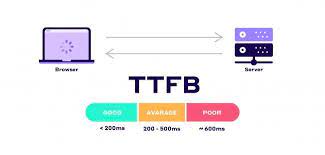TTFB (Time to First Byte) is a measure of how long it takes for the first byte of data to be returned from the server when a request is made to a website. A high TTFB can cause your website to load slowly and negatively impact user experience. Here are some ways you can reduce TTFB on your website:
- Use a faster web hosting service: The speed of your website’s server plays a significant role in TTFB. If your server is slow, it will take longer to process requests and return data, resulting in a high TTFB. Consider upgrading to a faster hosting service or switching to a provider with a better reputation for performance.
- Optimize your website’s database: A cluttered or poorly optimized database can slow down your website’s performance and increase TTFB. To improve your website’s speed, you should regularly optimize your database by deleting unnecessary data and repairing any broken tables. You can do this using a plugin like WP-Optimize or by using a tool like PHPMyAdmin.
- Enable server-side caching: Caching can significantly improve your website’s performance by storing static versions of your pages and posts in the cache. This means that when a user visits your site, they don’t have to wait for the server to dynamically generate the page each time. Instead, they can see the cached version almost instantly. You can enable server-side caching on your website by using a plugin like W3 Total Cache or by adding some code to your .htaccess file.
- Use a content delivery network (CDN): A CDN is a network of servers located around the world that serves your website’s static content, such as images and CSS files, from the server closest to the user. This can significantly improve your website’s loading times, especially for users located far from your server. There are several CDN providers you can use, such as Cloudflare and MaxCDN.
- Optimize your website’s code: Poorly optimized code can slow down your website and increase TTFB. To improve your website’s performance, you should minimize the use of unnecessary code and ensure that your website’s code is clean and well-structured. You can also use a tool like GTmetrix or PageSpeed Insights to identify and fix any code-related performance issues.
- Use a lightweight theme: Choosing a lightweight, optimized theme can significantly improve your website’s performance. Avoid themes that are loaded with unnecessary features and code, as these can slow down your site. Instead, look for themes that are optimized for speed and have a clean, minimal design.
By following these tips, you should be able to reduce TTFB on your website and improve its overall performance.
